| (Linear) Next >> |
| Strand7 Webnotes R3 | ||
|
Strand7 Webnotes are a comprehensive online library of resource materials covering Strand7 modelling, application, usage and installation, plus general background and theory of FEA. Access to the library is available to supported Strand7 users via a secure login and forms part of our Strand7 Support and Maintenance subscription service. To log in you will need your login details. Should you require information about your login details, please email us. Each Webnote in the library consists of a PDF describing the topic. Most Webnotes also include one or more Strand7 files to help illustrate the practical side. We aim to continually expand the Webnote library, so if there is a specific topic that interests you, or you have an idea for a Webnote that you would like to see, please email us. We welcome your comments and feedback about any Webnotes that you download. We are also interested in hearing from you should you find any errors in them or require further clarification. |
||
| Recent Additions | ||
|
0.9 MB |
ST7-R3.40.20.15 Mooring Line Snapback Simulation Mooring line snapback events pose a significant danger in maritime operations, potentially causing severe injury or damage to personnel, equipment and vessels. These events occur when tensioned mooring lines suddenly break or release, resulting in high-speed, unpredictable recoiling movements. Mitigating this risk necessitates thorough testing and planning. Simulating snapback events, using Strand7, complements these efforts; detailed insights into the behaviour of mooring lines during snapback events can be obtained, aiding in the development of effective safety measures and protocols. |
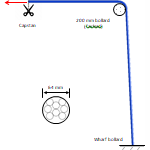
|
|
0.6 MB |
ST7-R3.50.10.25 Using DXF Imports for Automeshing DXF is a CAD file format originally used for 2D and 3D sketches represented by polylines. In recent years, ACIS SAT geometry data has been incorporated into DXF files (ACIS SAT files offer greater flexibility to represent 2D and 3D surface and solid geometry). Strand7 can import both types of data contained in DXF files: polylines and SAT geometry. This Webnote examines the import of these types of data from DXF files, together with procedures for preparing and meshing the underlying geometry. |
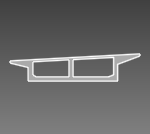
|
|
1.0 MB |
ST7-R3.50.50.23 Using Cavity Layout and Attribute The cavity attribute fills a closed cavity (i.e., volume) defined by plate and/or brick faces, with a fluid – e.g., the inside surface of a balloon, the inside surfaces of an IGU (Insulated Glass Unit), and so on. Two types of cavities are available and these are defined under LAYOUTS/Cavities:
|
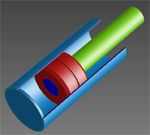
|
|
1.0 MB |
ST7-R3.57.30.14 Follower Loads for Linear Buckling and Natural Frequency Solvers Pressure loads on a surface “follow” the surface as it deforms; i.e., the direction of the resultant of the pressure follows the changing direction of the surface normal. This follower effect can lead to a reduction in buckling load and can modify natural frequencies. The linear buckling and natural frequency solvers, using the elastic and the stress stiffness matrices, do not capture this effect, and therefore the Nonlinear Static and/or Nonlinear Transient Dynamic solvers, with geometric nonlinearity, are usually required. Alternatively, the follower load option, available in the Strand7 Linear Buckling and Natural Frequency solvers, can be used to add a “load stiffness” term that depends on the geometry change to account for the follower effect. |
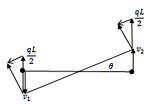
|
|
1.9 MB |
Strand7 API Course Python The Strand7 API Course offers an introduction to the Strand7 Application Programming Interface through a number of self-guided exercises and examples. The Python programming language is used as the development framework. |
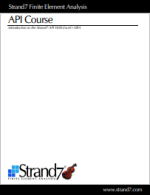
|
| (Linear) Next >> |

 Menu
Menu